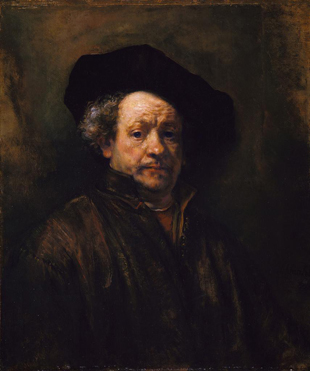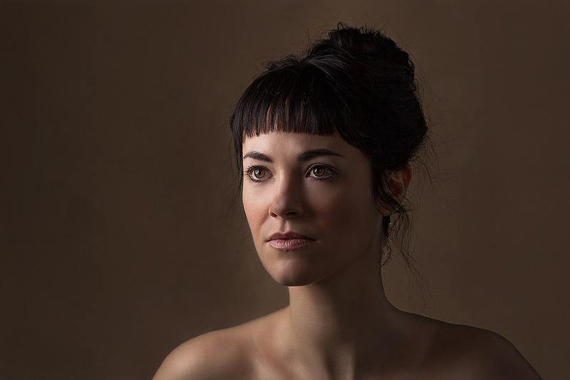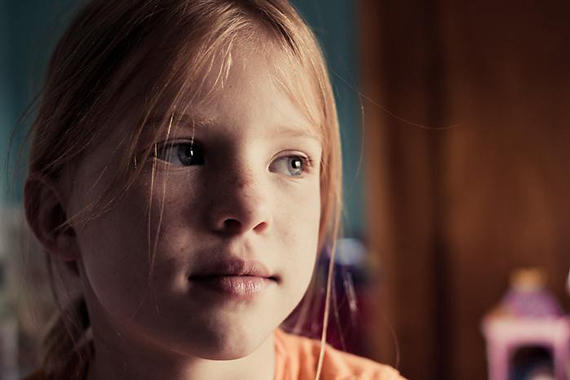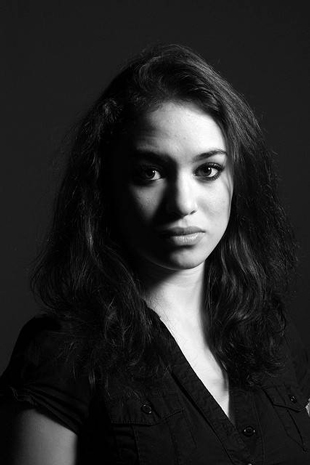Our portrait photography photo tip for today is about “Rembrandt Lighting.” This is a great lighting pattern to use if you are going for a dramatic mood in your portrait. Not every face is ideal for Rembrandt lighting, but it is a powerful addition to your portrait photography lighting arsenal.
What is Rembrandt lighting?
Rembrandt lighting is a portrait lighting pattern that shows one side of the face in highlight and the other in shadow. On the shadowed side, the cheek has a triangle of light. It is called Rembrandt lighting because the Dutch artist Rembrandt frequently used it in his portraits.
Many budding photographers shy away from using these advanced lighting techniques because they don’t have any studio lights. Let this be a motivator for you. Rembrandt didn’t have studio lights either! (He didn’t even have electricity.) This–and all of the other lighting patterns–can be used with any light source, not just studio lights. Windows, the sun, reflectors… it just doesn’t matter. It’s the shadows that matter, not the source of the light creating them.
Remember, broad lighting is when the side of the face furthest from the camera is in shadow. Short lighting is when the side of the face closest to the camera is in shadow. Since shadow areas tend to visually recede, broad lighting makes the face look wider – more broad. That’s where the pattern’s name came from.
Since most of us want to look thinner, you will most likely be using the Rembrandt lighting pattern with a short light base in most of your portrait photography. But, not always, so learn and practice creating it both ways.
How do you create the Rembrandt lighting pattern?
Position your subject so the light source is to the side and higher than the head. Then have your subject turn slightly away from the light source. (Or move the light source if it is mobile.)
One problem you may encounter is that if you are using light from a window or a large reflector, some of the light may be coming from too low of an angle and mess up your pattern. Just cover up the bottom part of the light source and block off the extraneous light. Problem solved.
In a previous article on loop lighting, we discussed not letting the shadow from the nose touch the shadow on the cheek. In Rembrandt lighting they do intersect. That is what creates the triangle.
Some subjects will have facial and/or nose shapes that don’t easily lend themselves to this pattern. In this case, make sure you are doing it right, and if it isn’t working, do something else. Another lighting pattern will be more suited to their face.
The Rembrandt lighting pattern is a good one for adding drama to your portrait photography. It is also one of the classic photo lighting patterns, and every photographer should be comfortable in using it.
Today’s photo assignment is to learn the Rembrandt lighting pattern and use it in your portrait photography. It can definitely separate you from the crowd.
About the Author:
Dan Eitreim writes for ontargetphototraining.com. He has been a professional photographer in Southern California for over 20 years. His philosophy is that learning photography is easy if you know a few tried and true strategies.
Like This Article?
Don't Miss The Next One!
Join over 100,000 photographers of all experience levels who receive our free photography tips and articles to stay current:










Thank you – just what I need, both for artistic reasons and budget considerations :)
Wonderful little article. I have always wanted to try this.